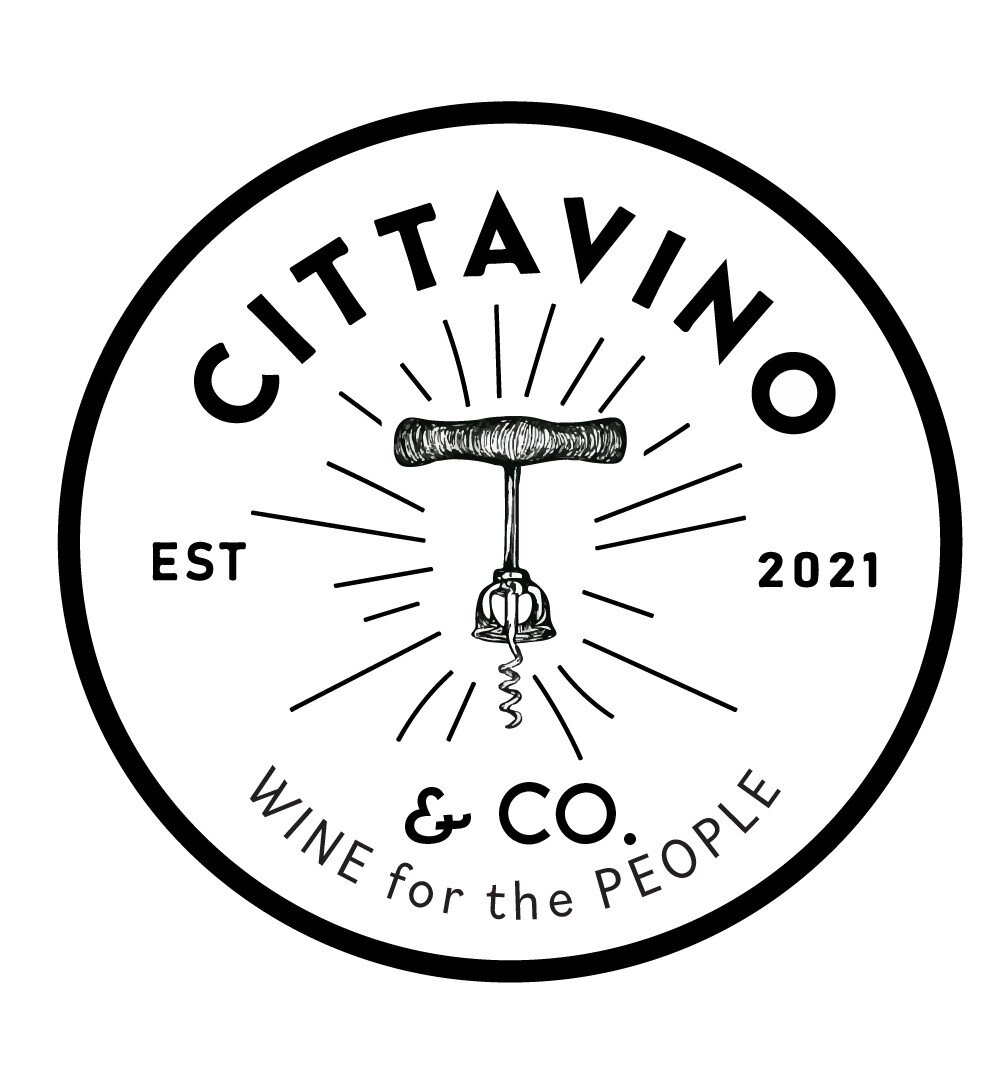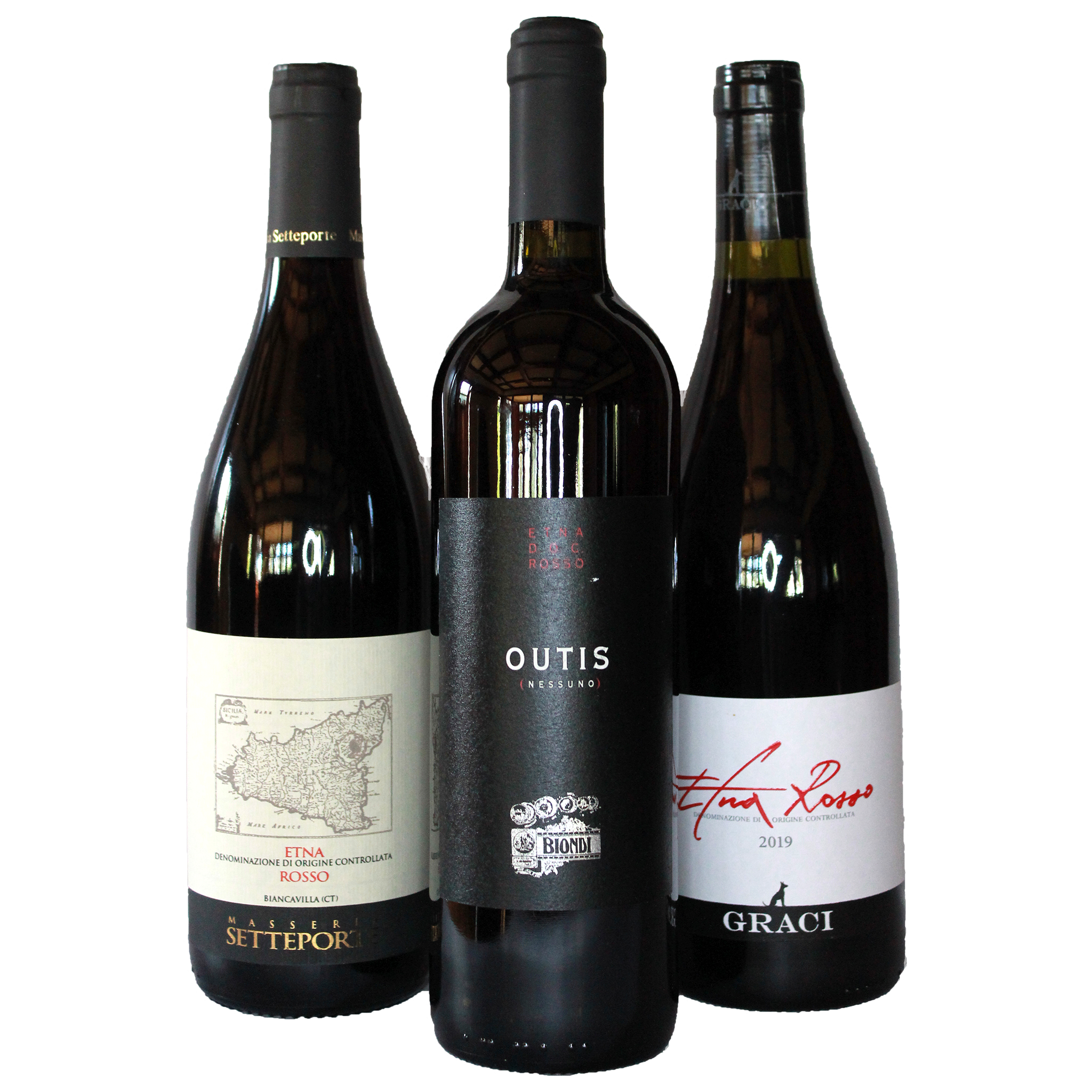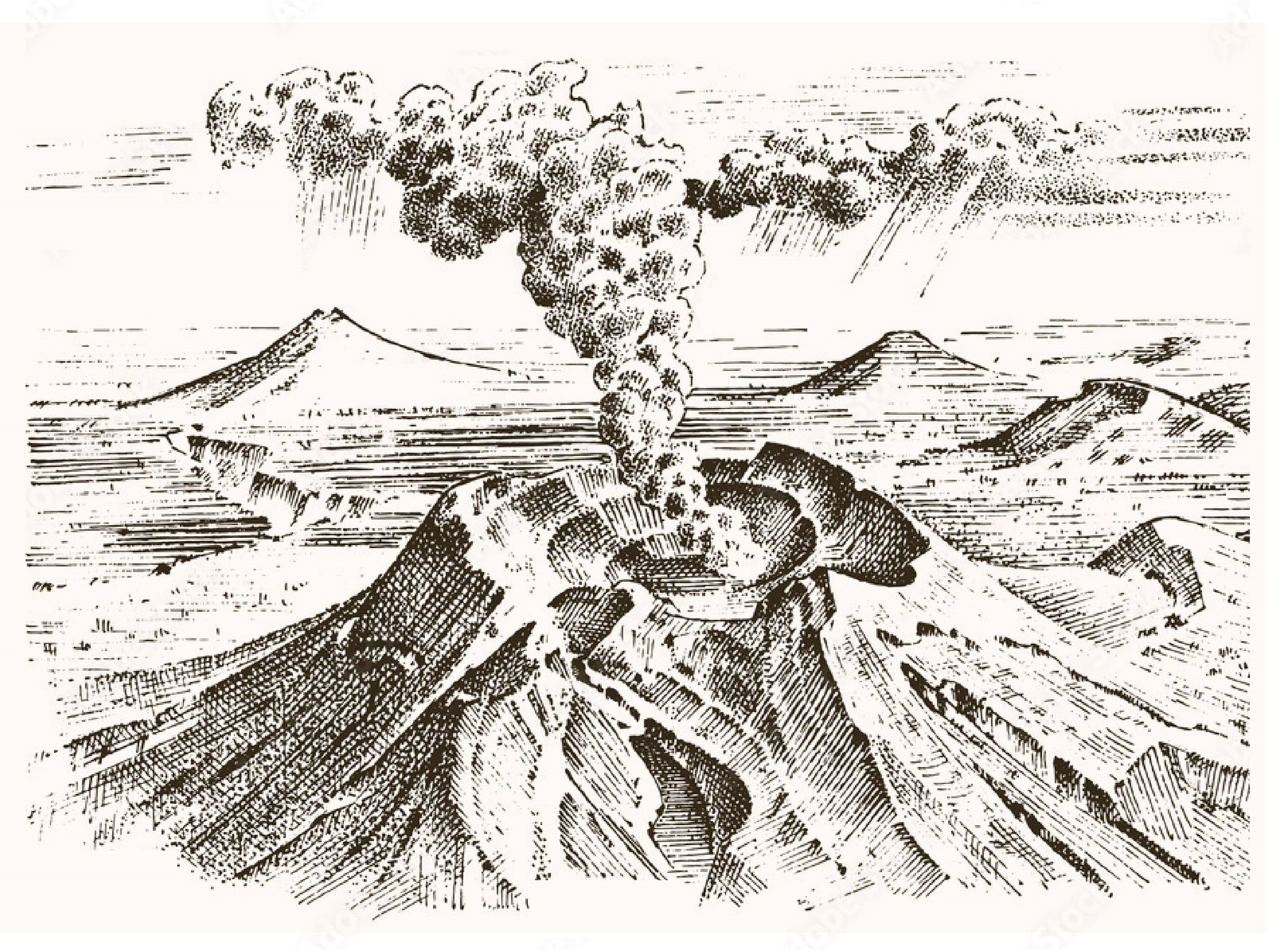3 Faces of Etna
Mt. Etna, Sicily is a wild terrior, with unpredictable weather patterns, and a mosaic of different sun exposures and winemaking styles. We're here to offer some tools and guidance to help you sort through this complex volcanic zone.
If you're here to drink up all the tasty wine you can, check out our SPOTLIGHT: MT. ETNA shop page, all these wines are selected by yours truly. They represent the best of producer and terrior. Many are conveniently in preselected packs to save you the time in choosing.
NORTH
The vineyards in the North are exposed northernly—that is, away from the equator. Generally speaking, facing North means these sites receive less sun exposure and less heat radiation. In most wine regions in the Northern Hemisphere, premium sites face South, as it helps with grape ripening. In some regions, this southernly exposure is absoutely necssary and is the determining factor in whether or not the grapes can actually be processed into wine. Without this extra warmth, grapes would remain so acidic and sugars would not be sufficient enough for alcoholic fementation.
Sicily is fairly low in latitude for a Northern Hemisphere wine growing region and is therefore, relatively close to the equator. This means that here can still reach full ripeness, despite facing North. The North exposition, in addition to higher elevations (grapes for an Etna DOC wine from the North can grow up to 1000m above sea level), allows the grapes to retain a ultra fresh acidity.
The northern zones also tend to use higher percentages of Nerello Mascalese—often bottling it as a 100% single varietal. Nerello Mascalese is often compared to Sangiovese and Nebbiolo, with its light red color, cherry fruit, and tannic structure. You will find that these wines stay light and bright, red fruited, and maybe more tightly wound with tannin than its southern counterparts.
EAST, SOUTH, and NERELLO CAPPUCCIO
Ok, tecnically Biondi would be considered South-East, but we believe they represent Etna so classically that we could consider them a representation for an Eastern face red. Vines are lower in elevation than the North, and temperatures tend to be warmer. Expect riper fruits, and a less austere disposition.
The East and South faces use Nerello Cappuccio in much higher percentages than the northern counterparts. Cappuccio is darker in color, and has a distinct peppery note. When tasting the Graci Etna Rosso side by side with Biondi’s Etna Rosso “Outis” you will immediately notice the difference in grape composition.
Biancavilla is the last (or is it the first?) commune on Etna that can make wine within the Etna DOC. It is HOT here. lower elevation and full on South facing vineyards, it’s sort of a category unto its own. In addition, the soils here are different and from a more ancient eruption than the rest of the growing region. The North face has a fair amount of this soil composition as well, but does not have the heat that Biancavilla does. Masseria Setteporte, one of the only Biancavilla wines exported to the USA, is unique in that it has both these rare soils and this unquie heat. Taste the nervy acid from the soils, combined with the ripe rich dark fruits of the Nerello Cappuccio grapes. Despite coming from Etna and the technically the same growing region, next to the Graci, it will taste like a whole other world.
This is a great intro pack to Mt. Etna. It will give you a firm grasp on this diverse growing zone, and peak your interests in a deeper dive—warning: there’s no end to this rabbit hole. I’m still in full decent myself!


